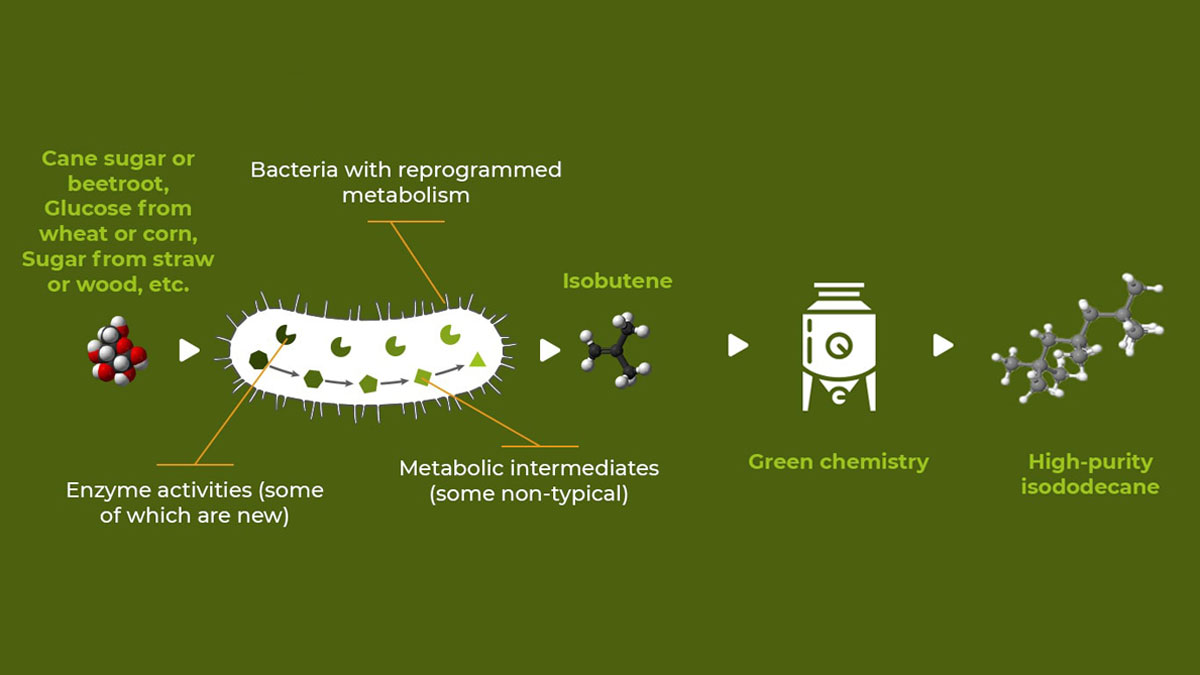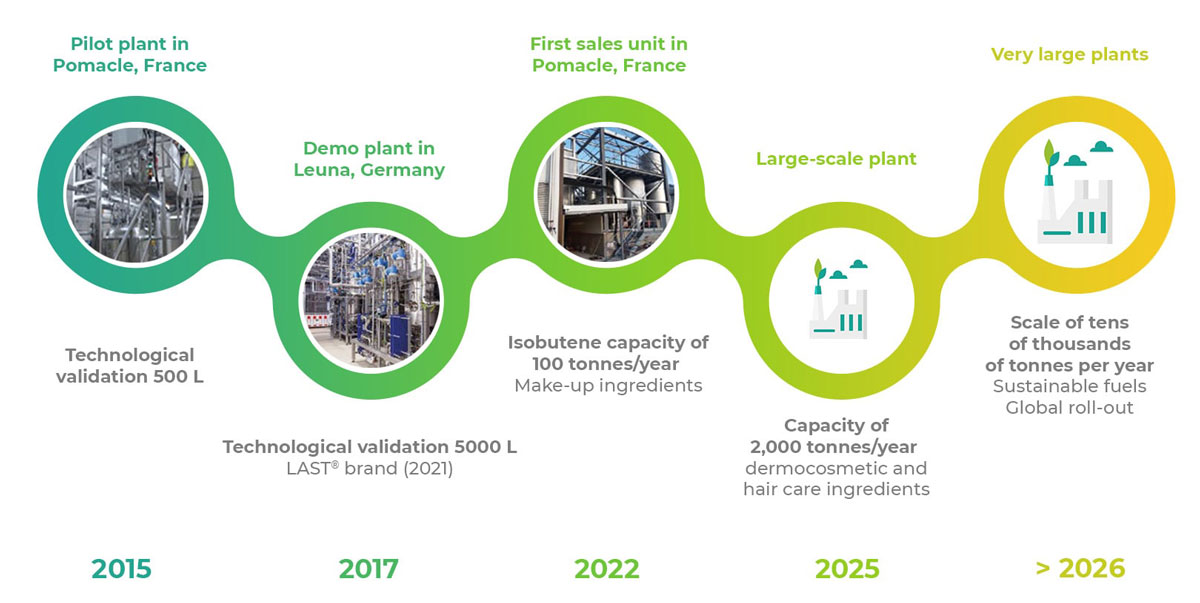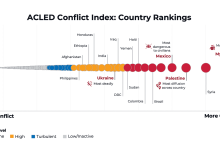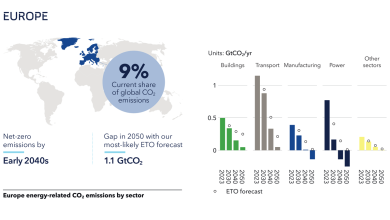New Decarbonisation Solutions: Waste-eating Bacteria
To decarbonise the entire global economy, many are looking for solutions. Some find them. Microbiologist Marc Delcourt, co-founder and CEO of Global Bioenergies, and his team have succeeded in finding solutions to convert vegetable waste into isobutene.
Isobutene is not well known to the general public. However, it is used in the synthesis of many everyday products, from gasoline to kerosene, including tyres and plastics and even cosmetics.
Isobutene is a colourless, flammable, industrially used gas resulting from the treatment and processing of oil or gas. Isobutene (also called isobutylene or methylpropene) is an organic compound with the chemical formula (CH3)2C=CH2. It is a branched-chain alkene, being one of the four isomers of butylene.
Currently, methods to produce high purity isobutene mainly include the Methyl tertiary-butyl ether (MTBE) cracking method, the tertiary-butanol dehydration method and the isobutane dehydrogenation method. Of these, the MTBE cracking method is the most important method for producing high purity isobutene. It accounts for more than 75%, followed by the isobutane dehydrogenation method. However, due to the obvious trend towards banning MTBE, pressure on the MTBE isobutane cracking method is increasing and market attention is shifting towards the isobutane dehydrogenation method.
The colourless gas can be easily liquefied under pressure. As it is also a necessary raw material to produce various polymers or end products such as polyisobutene (PIB), butyl rubber, antioxidants, due to its reactivity and properties, this gas is a versatile and valuable element in chemical syntheses.
Isobutane, the smallest of the branched molecules, has four-star carbon atoms and a double bond, which gives the secret to its chemical reactivity. Isobutene thus offers access to a whole palette of connected molecules with properties that are absolutely essential to the industry: the tightness of tubes, the volatility of molecules in cosmetics, the octane number in gasoline.
To be transported, isobutene is liquefied, safety being a top priority. Dedicated transport equipment is used. Deliveries can be made by road with tanker trucks, by rail with tank wagons, intermodally with tank containers and by barge and seagoing vessels.
Conversion of plant resources to isobutene
With experts hoping to find a cleaner way to produce isobutene, Global Bioenergies has developed a unique process to convert plant resources into isobutene.
“My job is to manipulate micro-organisms to make them produce things that interest us,” says Marc Delcourt, co-founder and CEO of Global Bioenergies.
An innovative technology?
But what are the main aspects that qualify this technology as innovative?
- Bio-based isobutene production is a considerable technical challenge that has required more than 14 years of intensive research and development.
- A bacterial strain capable of converting sugars to isobutene has been built; it started from scratch, completely reprogramming its metabolism.
- This bold and complex process has pushed the boundaries of biotechnology.
- This innovation will save 2 tonnes of CO2 for every tonne of isobutene produced, compared to the petrochemical sector.
“Teaching bacteria to produce isobutene is extremely difficult. It is not in their nature. Synthetic pathways need to be modified. Addition and deletion of genes alters central metabolism. The process was very long and very difficult. But today, it works and has a lot of industrial advantages,” adds Marc Delcourt.
Process carried out by Global Bioenergies
Take some sugars first. Those found in beet molasses or degraded grains. Or even those that remain in agricultural waste, straw, chips, or twigs. Put everything in a purpose-designed fermenter with bacteria developed by Global Bioenergies. The result is gas: the famous isobutene.
“The other processes of industrial biology lead to the production of a liquid. However, it tends to accumulate in the environment and ends up killing microorganisms. Our gas is evacuated in real time, keeping our bacteria,” continues Marc Delcourt.
“Genetically modified bacteria are kept in a strictly restricted environment. But even if the medium were broken, they would not survive because they tend to waste their carbon, turning it into isobutene,” explains the microbiologist. The life of a bacterium, in fact, is limited to producing DNA, a little protein and a little membrane to grow and divide. Without carbon available for these effects, it has no chance of survival. “That’s why no bacteria naturally produce isobutene,” concludes the microbiologist.
Why isobutene?
Because it is a molecule derived exclusively from petroleum, it targets a worldwide market of 15 million tonnes and $20 billion and has multiple applications: energy, materials, cosmetics.
In terms of environmental impact, analysis by Global Bioenergies shows that carbon dioxide (CO2) emissions from isobutene production by bacteria are three to five times lower than from fossil fuel production.
“With oil or gas, the pathway is from underground to atmosphere. With industrial biology, we are entering a cycle. Plants capture CO2. We extract sugars from these plants and produce chemicals that burn over time in landfills or as fuel. And the CO2 thus produced will be reused by the next generation of plants,” explains Marc Delcourt.
The cycle is not quite perfect. Because you have to integrate fertilizers, tractors, factories. But life cycle analysis – which includes CO2 emissions from bacteria – still shows a 60-80% decrease in emissions.
Opening the biofuels market
By 2025, Global Bioenergies plans to have a plant capable of producing 2,000 tonnes of isobutene per year.
“Fourteen years ago, we launched our project with the idea of participating in the decarbonisation of fuels. Then the price of oil collapsed. And electric cars have captured all the light on the subject of sustainable mobility,” recalls Marc Delcourt. But today, the deal could change again. “Oil companies are interested in our activities. Especially as today’s cars are fully compatible with these biofuels.”
Cost compatible with the road and aviation fuel market
A plant producing 30,000 tonnes of isobutene a year would make it possible to offer the product at a cost compatible with the road and aviation fuel market.
“As is well known, we have succeeded in having the first passenger aircraft to fly with biokerosene produced from isobutene. And this is just a first step,” concludes Marc Delcourt.
Ambitious targets for Global Bioenergies
There are some ambitious targets for green isobutene produced by Global Bioenergies:
- Reducing greenhouse gas emissions to fight global warming and reducing toxic particles for humans emitted during combustion;
- Revitalization of industry through the establishment of local sectors;
- Strategic interest for fuel production, especially for air transport.








